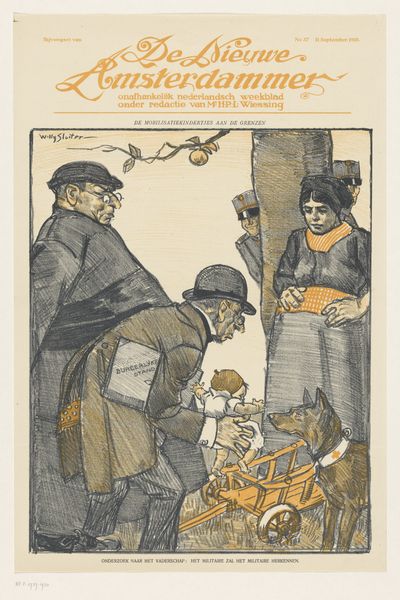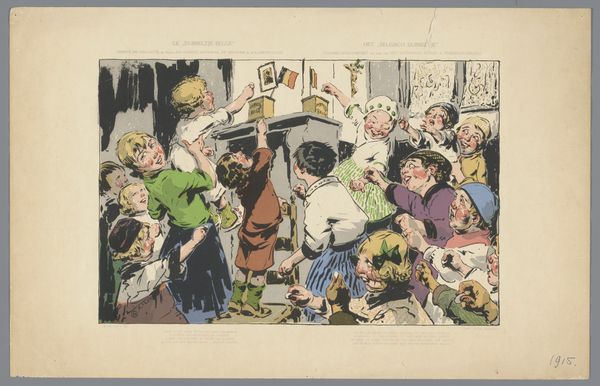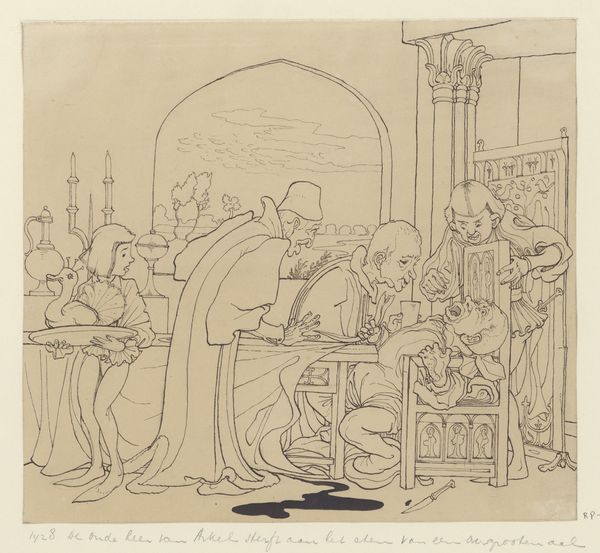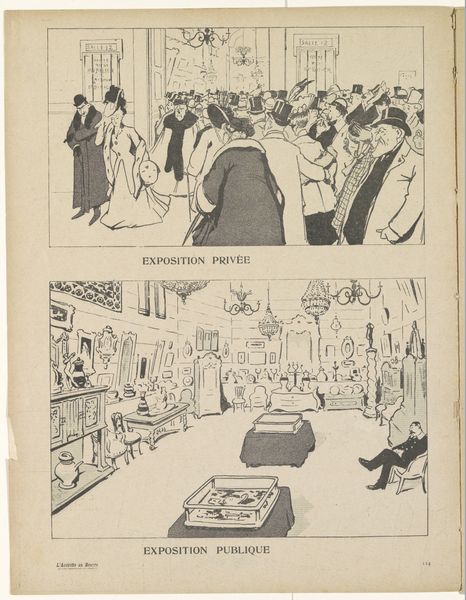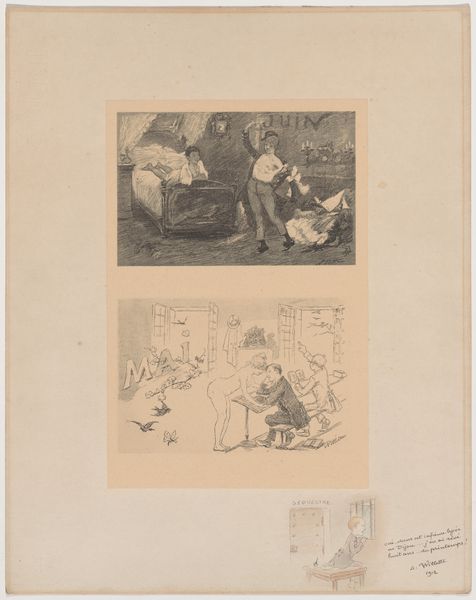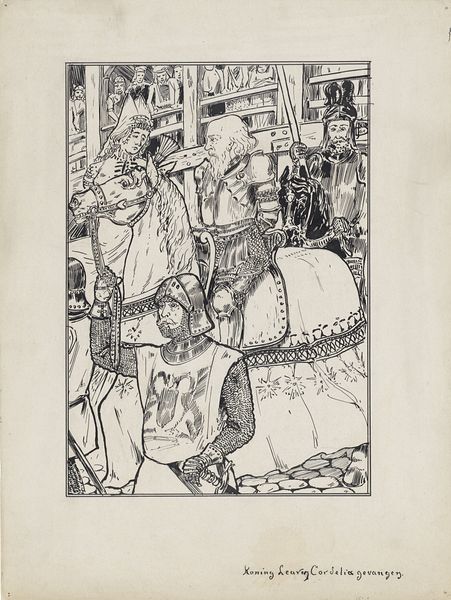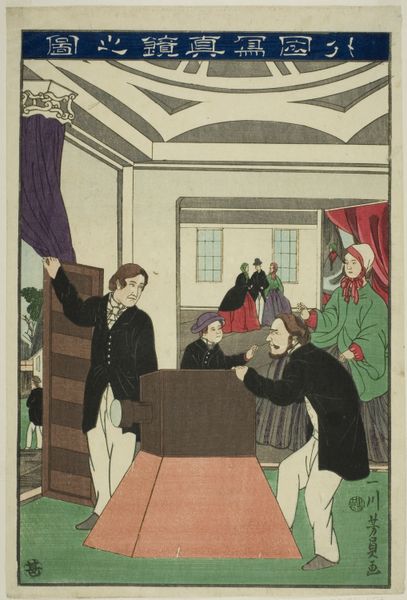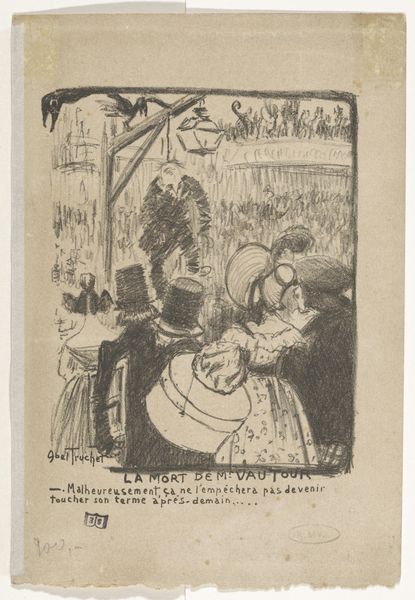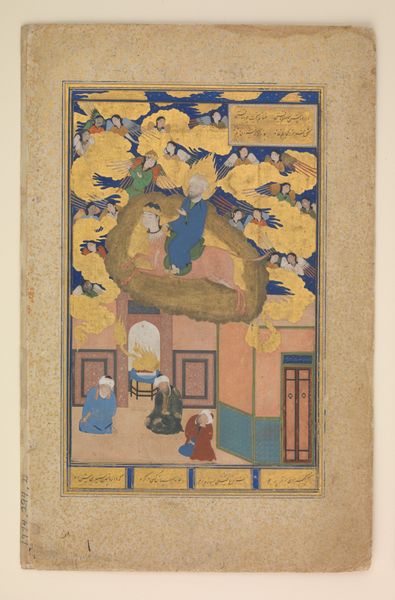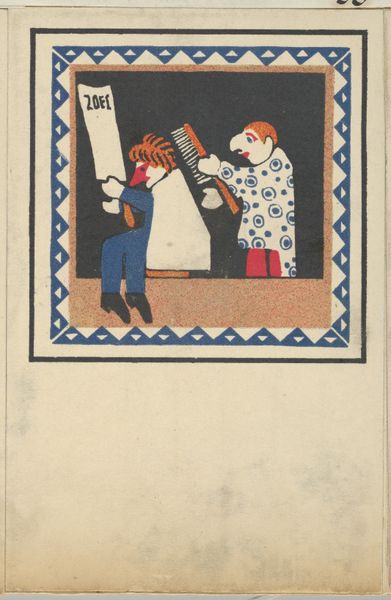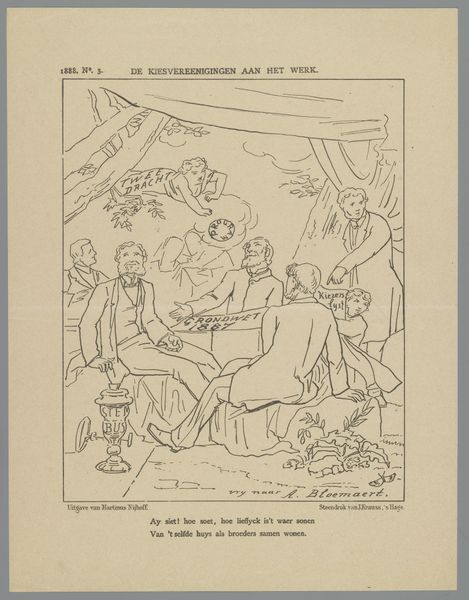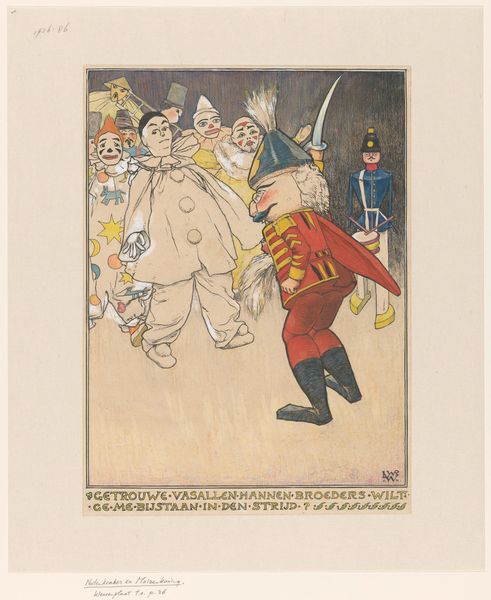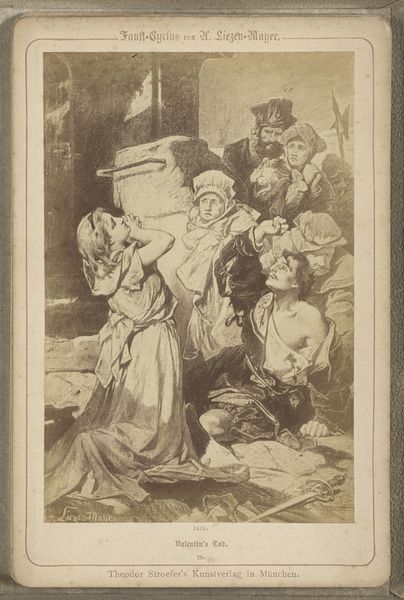
graphic-art, collage, lithograph, print, decalcomania, mural
#
graphic-art
#
comic strip sketch
#
art-nouveau
#
collage
#
comic strip
#
lithograph
# print
#
caricature
#
german-expressionism
#
decalcomania
#
comic
#
cartoon carciture
#
mural
Dimensions: height 32.3 cm, width 24.6 cm
Copyright: Rijks Museum: Open Domain
Curator: Well, this piece is certainly provocative. What strikes you about it immediately? Editor: Destruction! A controlled chaos of figures gleefully smashing statues. It’s quite jarring, actually, to see such overt antagonism toward art. Curator: This lithograph with decalcomania and collage elements by Eysler & Co., titled "Lustige Blätter: Die Vandalen in München" dates from 1903. The context here is crucial. It is, of course, a pointed caricature of the bourgeoisie's perceived lack of appreciation for avant-garde art at the time. The title references the Vandals, known for sacking Rome. Editor: So, this act of destruction is symbolic, but also literal in its message? Are these figures meant to represent specific individuals, cultural leaders maybe? The detail in their faces… that sneering expression on the figure to the left, for instance. Curator: Possibly archetypes. It critiques their artistic vandalism by way of dismissal and philistinism; wielding the power to ignore or outright reject innovative ideas. They seem unified in their conviction to preserve outdated artistic forms and moral codes by force. It’s important to look at their dress as well, those severe black suits, emphasizing their authority. Editor: The use of caricature definitely amplifies that sentiment. The broken sculptures, the flattened perspective... the artistic style serves to satirize its own destruction, yes? To me, this speaks to a deep insecurity within established cultural institutions regarding what is considered acceptable or valuable in art. It’s a power struggle made visible. Curator: Exactly. The setting seems almost pastoral, perhaps even invoking notions of civic beauty, which only makes their actions feel all the more intrusive and barbarous. The inscription beneath the illustration reinforces it all, with its defiant and ignorant tone. This print encapsulates the art world’s tension in grappling with radical ideas at the dawn of the 20th century. Editor: This certainly leaves a mark, prompting one to confront historical and persisting elitism in the appreciation of creativity. Curator: Indeed, an invitation for questioning which legacies do we uphold, and what exactly might stand broken at our feet?
Comments
No comments
Be the first to comment and join the conversation on the ultimate creative platform.
